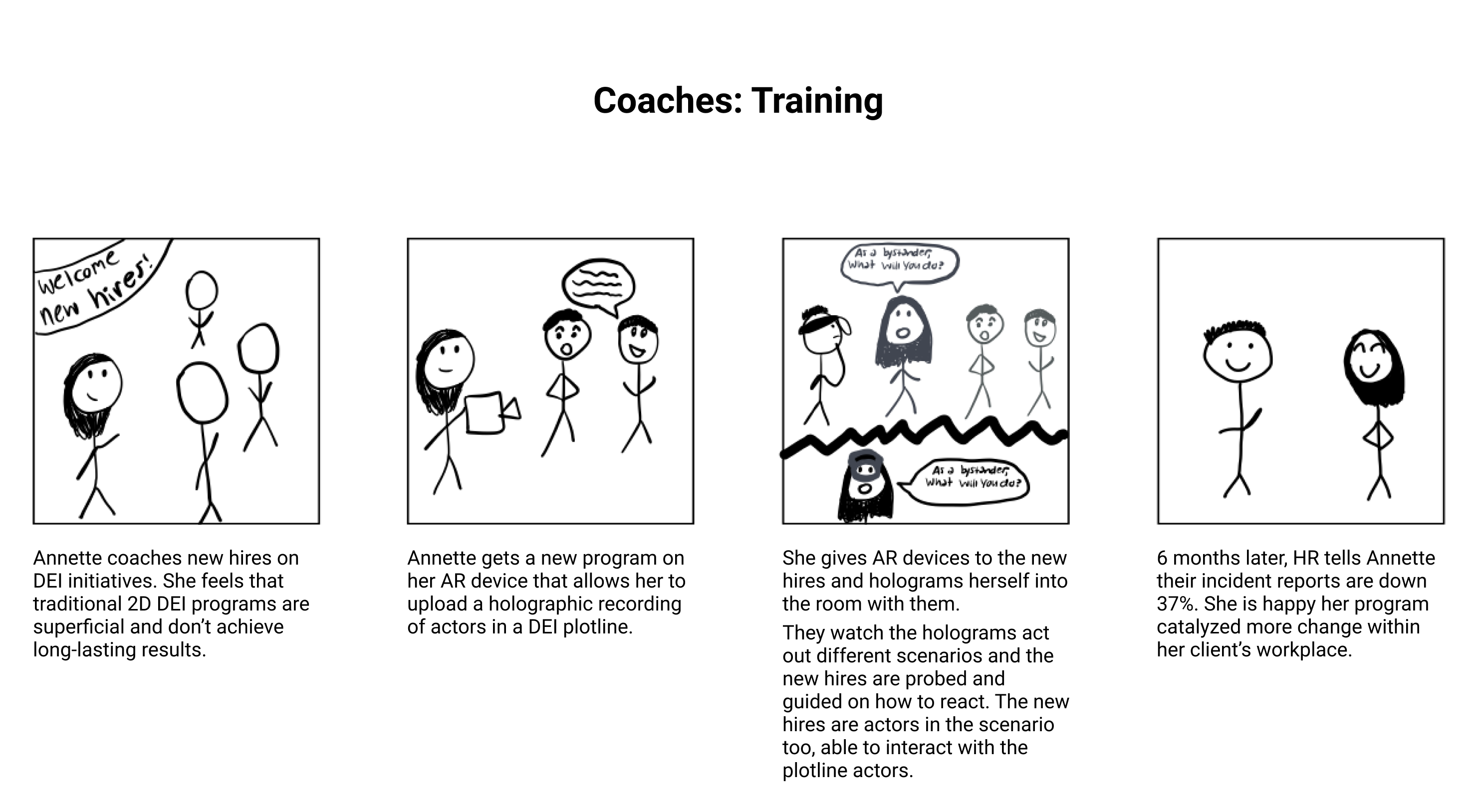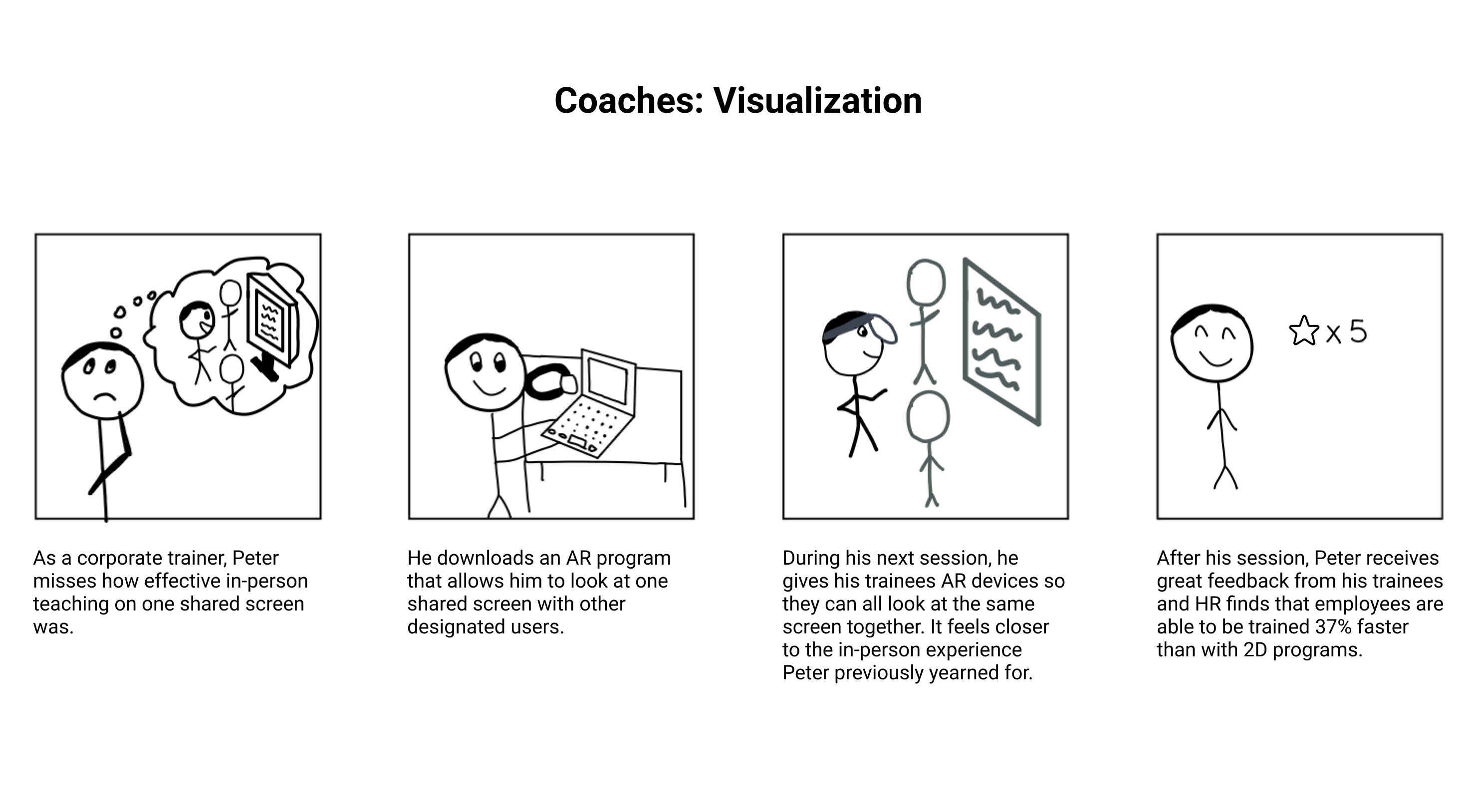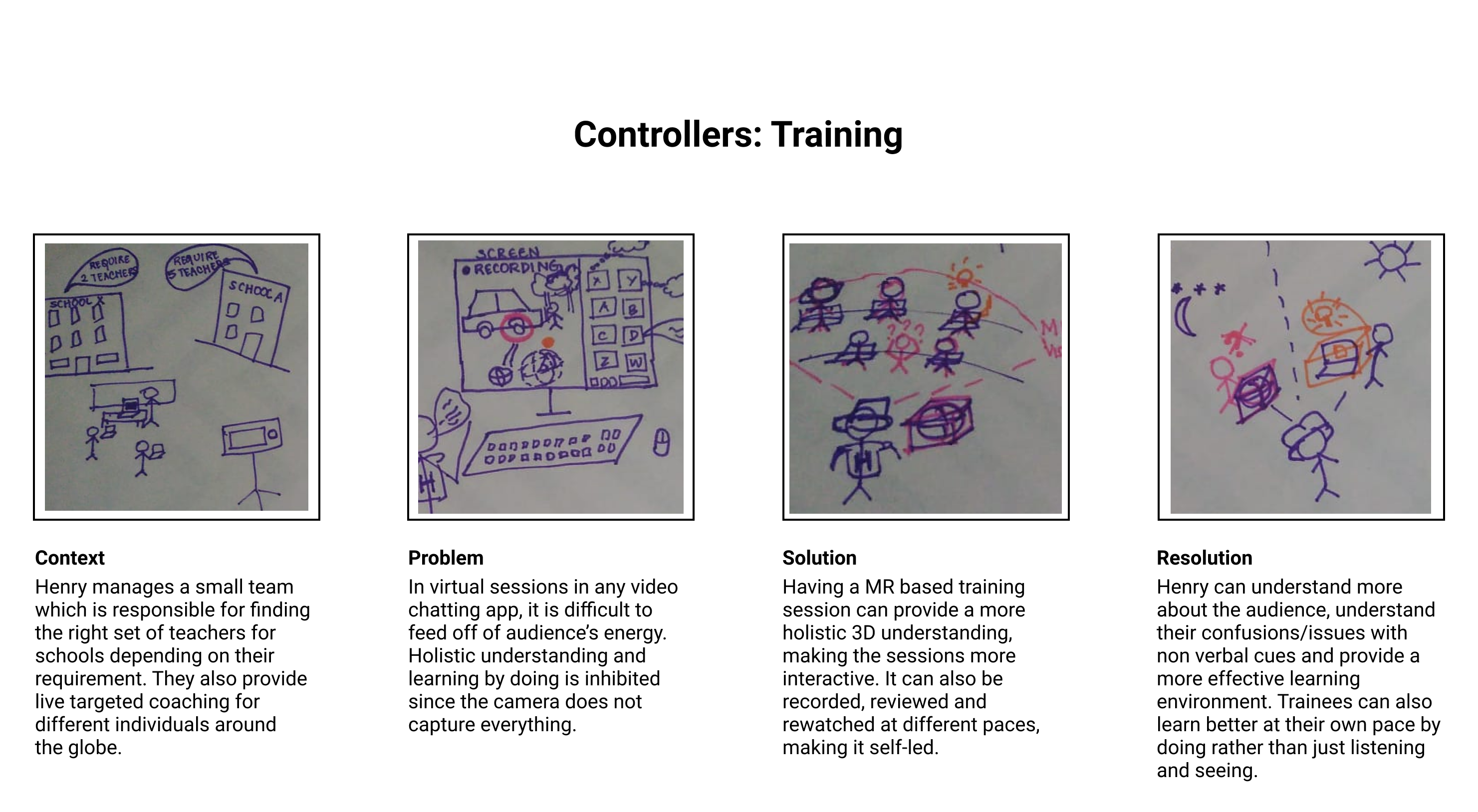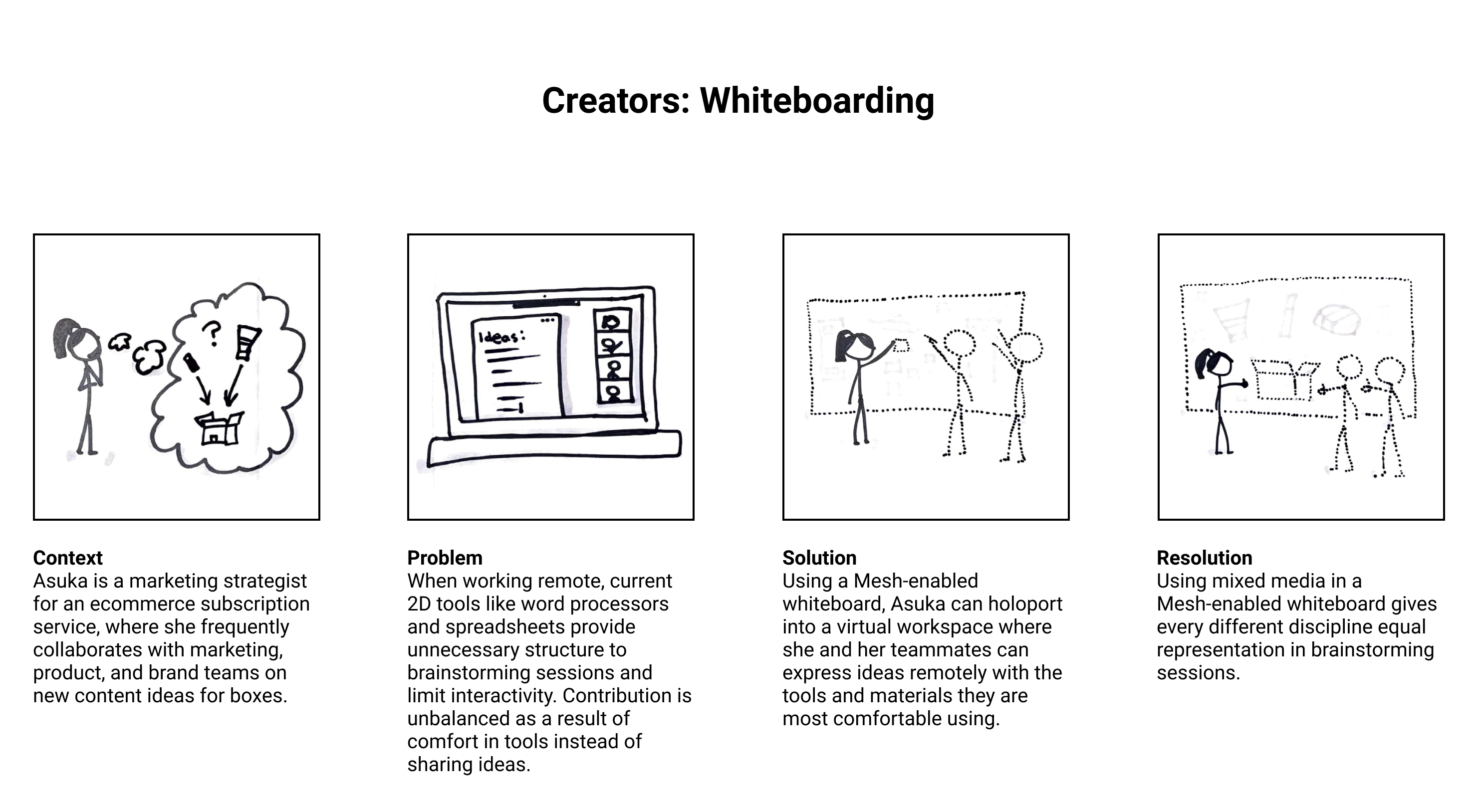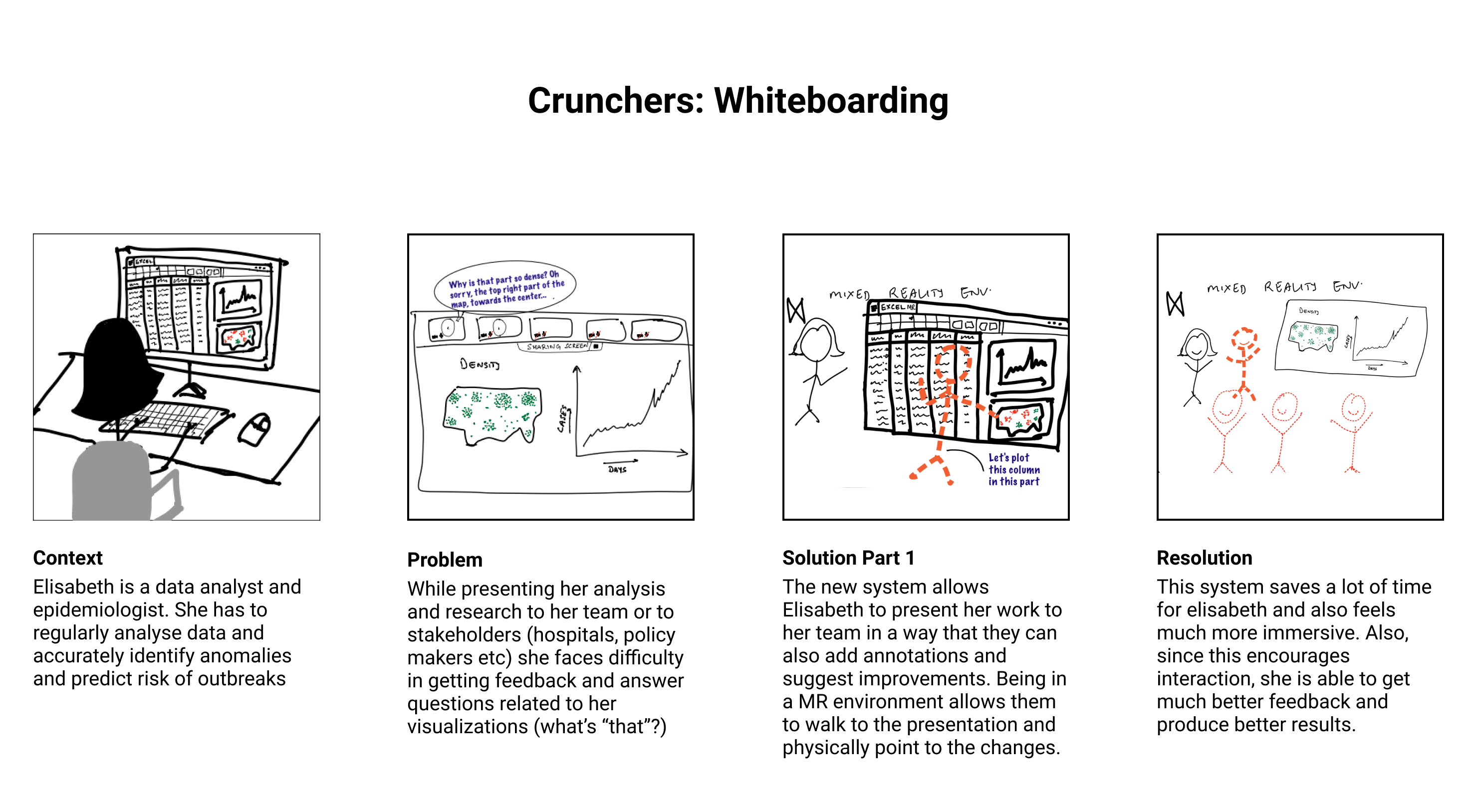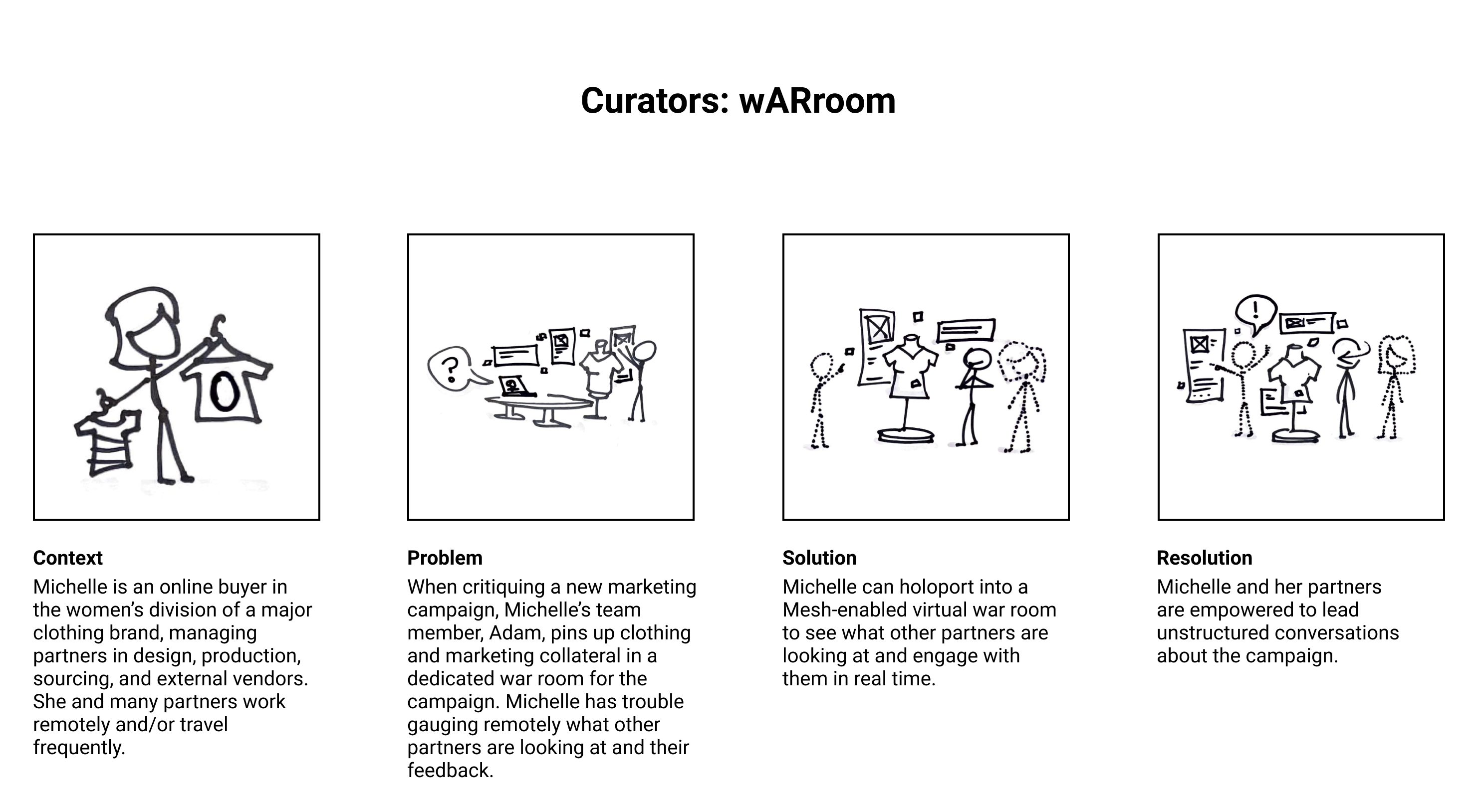Microsoft
A new Mixed Reality experience for remote creative collaboration
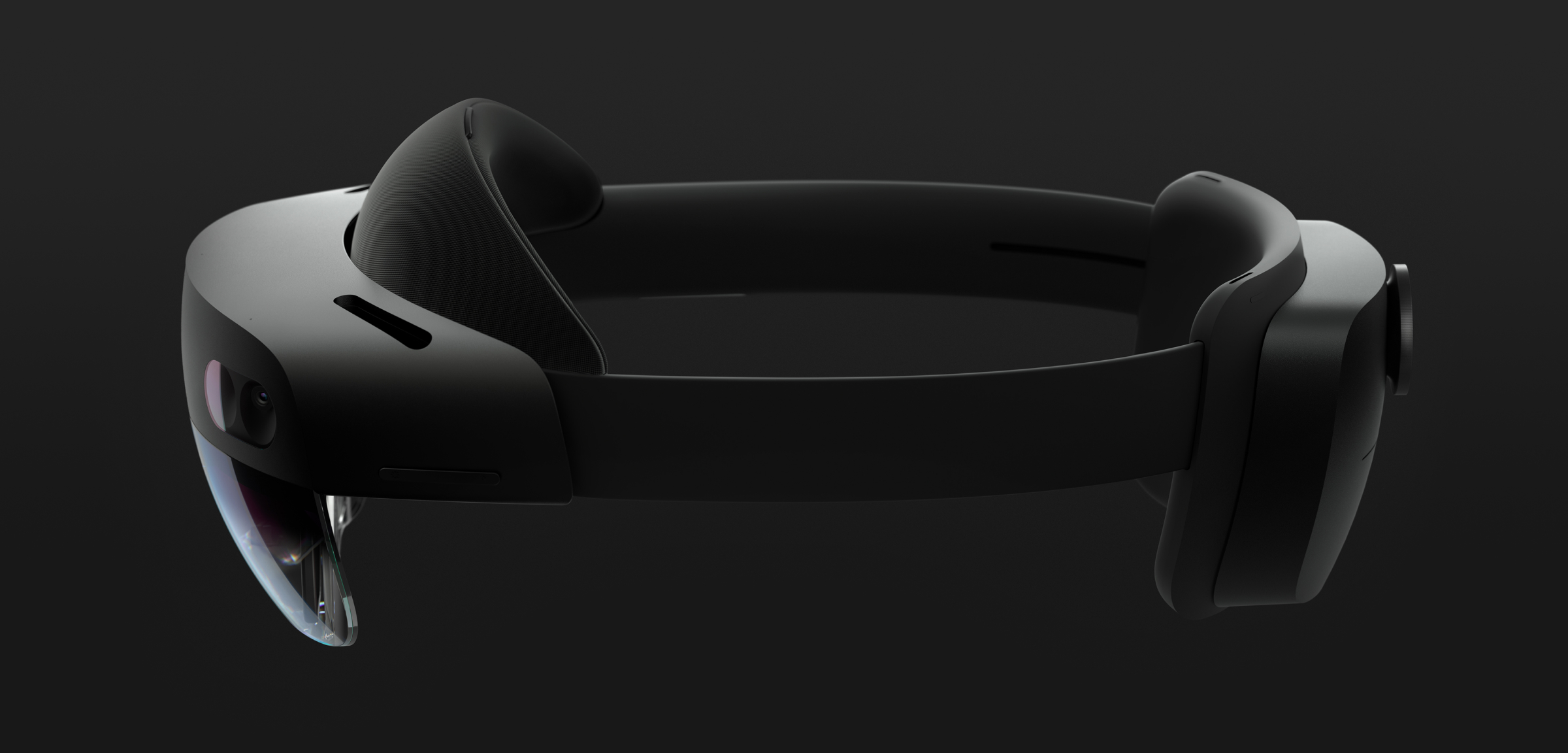
About the Project
Designing the future of the war room for remote collaboration.
Through CMU’s Corporate Startup Lab, my team partnered with Microsoft to explore how Mixed Reality can improve collaboration among Information Workers. We created the wARroom, a prototype Mixed Reality environment where multidisciplinary teams meet in real time to conduct unstructured exercises such as brainstorming, visual curating, and project planning.
My Role
User-centered research, product design
Client
Microsoft through CMU’s Corporate Startup Lab
Deliverable
Virtual Reality Prototype
Additional Team
-
Gabbi Laborwit
UX Researcher
-
John Plunkett
Business Strategist
-
Nobuhiko Morikawa
Business Strategist
-
Guanzhao Li
Prototyper
-
Tarang Shah
Prototyper
-
Uma Arunachalam
Prototyper
Background
Where does 2-D fail with remote work?
COVID-19 swiftly and drastically changed the modern workplace since 2020. One common misconception around the rapid transition to Work-From-Home was that people that work primarily on laptops would be the easiest to adapt. This type of employee, broadly labeled Information Workers, uses theoretical and analytical knowledge to create products and services. However, the lack of coworker presence and shortcomings of 2-D tools leaves much to be desired to truly emulate the workplace.
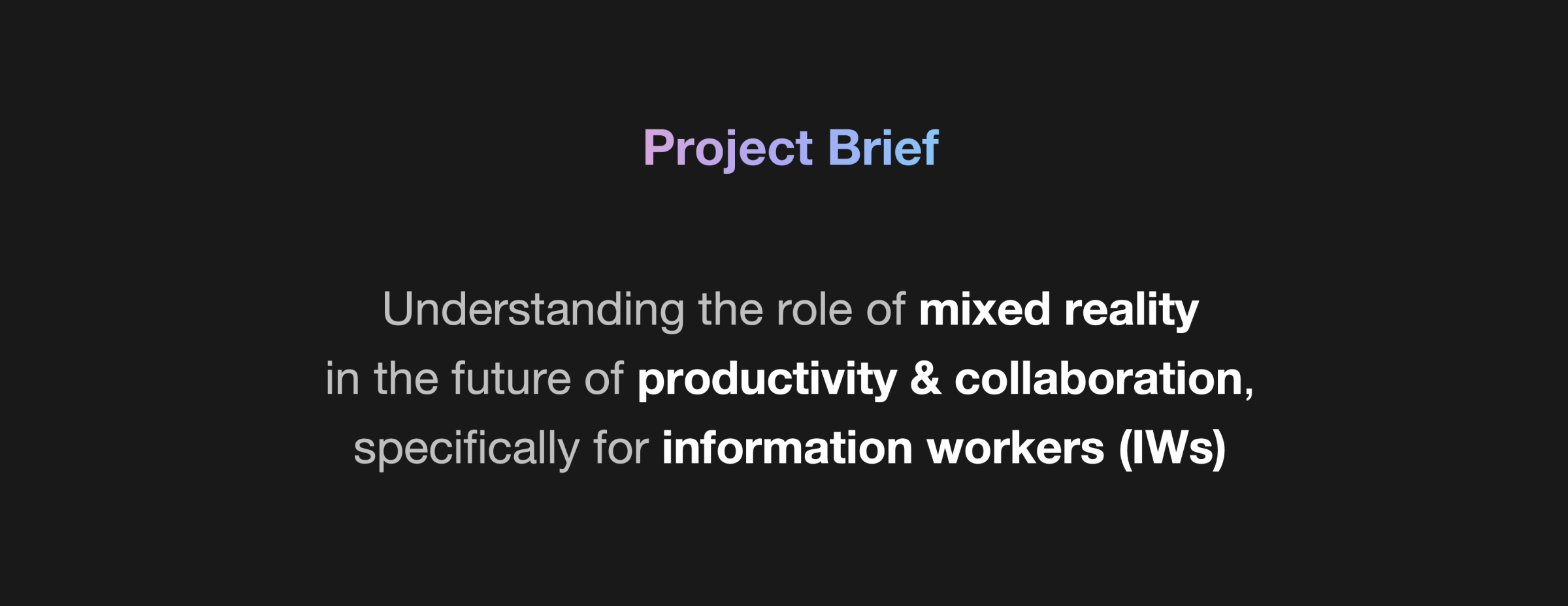
Additionally, Microsoft launched Microsoft Mesh as a way of connecting their existing Mixed Reality devices to create real time interactive multiplayer experiences to device users. Through our project, our team sought to understand what the global problems of Information Workers are, and to find an opportunity for Mixed Reality to improve collaboration.
Research
Understanding what Information Workers need
In addition to secondary research, I co-led a Semi-Structured interview initiative with my HCI teammate Gabbi. Our goal with these interviews was to understand how Information Workers viewed their work, with emphasis on their transition to remote work.
When conducting three initial pilot interviews, we realized that our broad interview protocol combined with the variety of different interviewees that fell under the definition of Information Worker resulted in unactionable and disparate data. We decided to pivot to a Diary Study with the hope that we could get more specific information.
In this new research plan, we asked recruits to take notes over their next three cross-functional meetings around how they collaborate and what they felt was either a benefit or a hindrance to the specific meeting.
Synthesis
Aggregating data and searching for patterns and opportunity
After collecting our interview data from seven Information Workers, the team reviewed each others interviews through interpretation sessions. Upon collecting interview notes, we began affinity mapping over 200 unique data points using Miro.
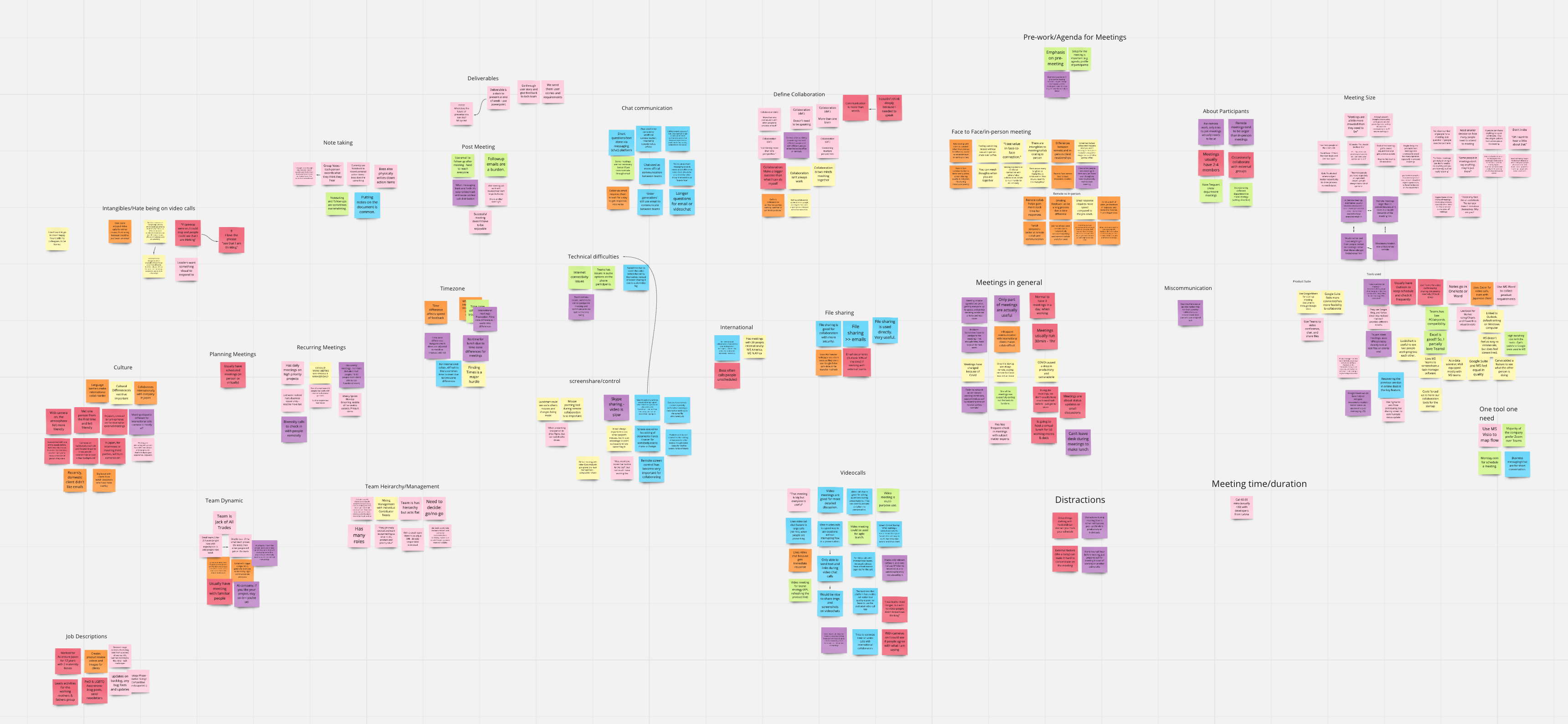
Through this, we discovered three truths that could apply to the generalized population of Information Workers:
Different communication platforms have unspoken rules and distinctions
Interdisciplinary meetings have a common goal to get everyone on the same page
Non-verbal cues, such as gesture, are key to conveying concepts to others
These insights became the goal for our team as we began to explore new ideas within this space.
As our insights began to take shape, our sponsor had also just received and shared with us a final comprehensive research document around Information Workers. We were very pleased to see that the insights and goals we were establishing aligned with their ongoing primary research.
Ideation
Rapidly generating and evaluating product-market fit
Shortly after completing our Diary Study, we received a comprehensive research report from Microsoft. This document validated our prior insights, and also outlined five customer segments that specified the different qualities of Information Workers.
This document also contained eight potential solution ideas that our sponsor encouraged us to explore. When combined with our new market segments, we had forty different market-solution fits, which we narrowed to six ideas we felt were best representative of user needs from our primary and secondary research.
We created storyboards from these ideas to convey user scenarios, which we ran by our sponsor for review. We then evaluated the storyboards favoring the two criteria that started our project:
- When does the presence of others matter the most?
- Where does 2-D fail in the current remote process?
When viewing our storyboards through this lens, the two that stood out the strongest were a whiteboarding tool for Creators and a War Room used for Curators.
Prototyping
Creating the best-fit persona to champion our prototype
Once we had our idea in mind, we approached our mid-fidelity prototype with a storyboard and a furtner developed persona named Danielle. Danielle represents both the creative and curator market segments as a fashion executive for a women’s clothing brand. As a team manager, she works with many different interdisciplinary departments, and her workflow has been stifled due to working remotely during the pandemic. To help tell our story, I illustrated a series of storyboard images to capture Danielle’s context and the essence of our prototype.
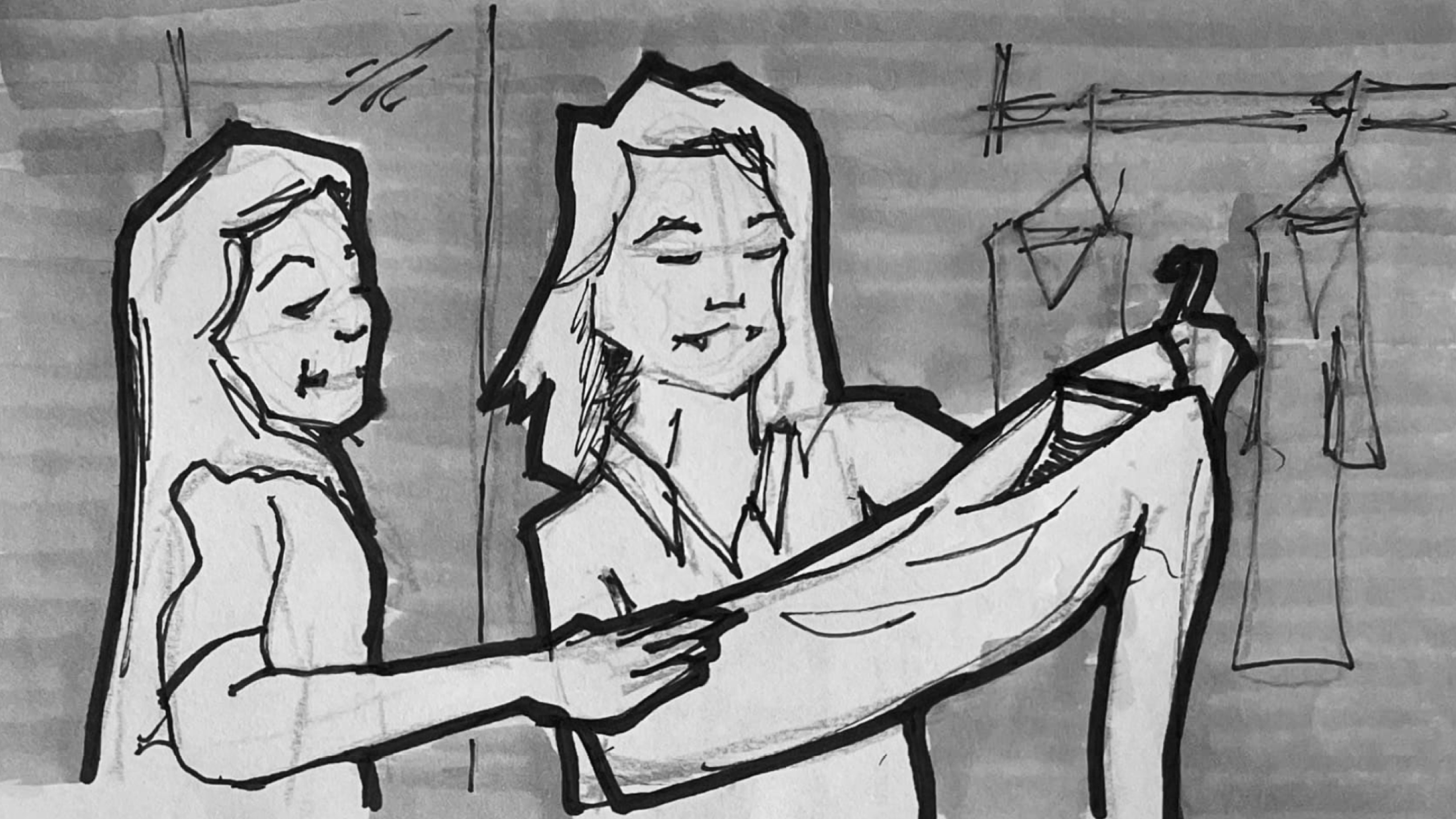
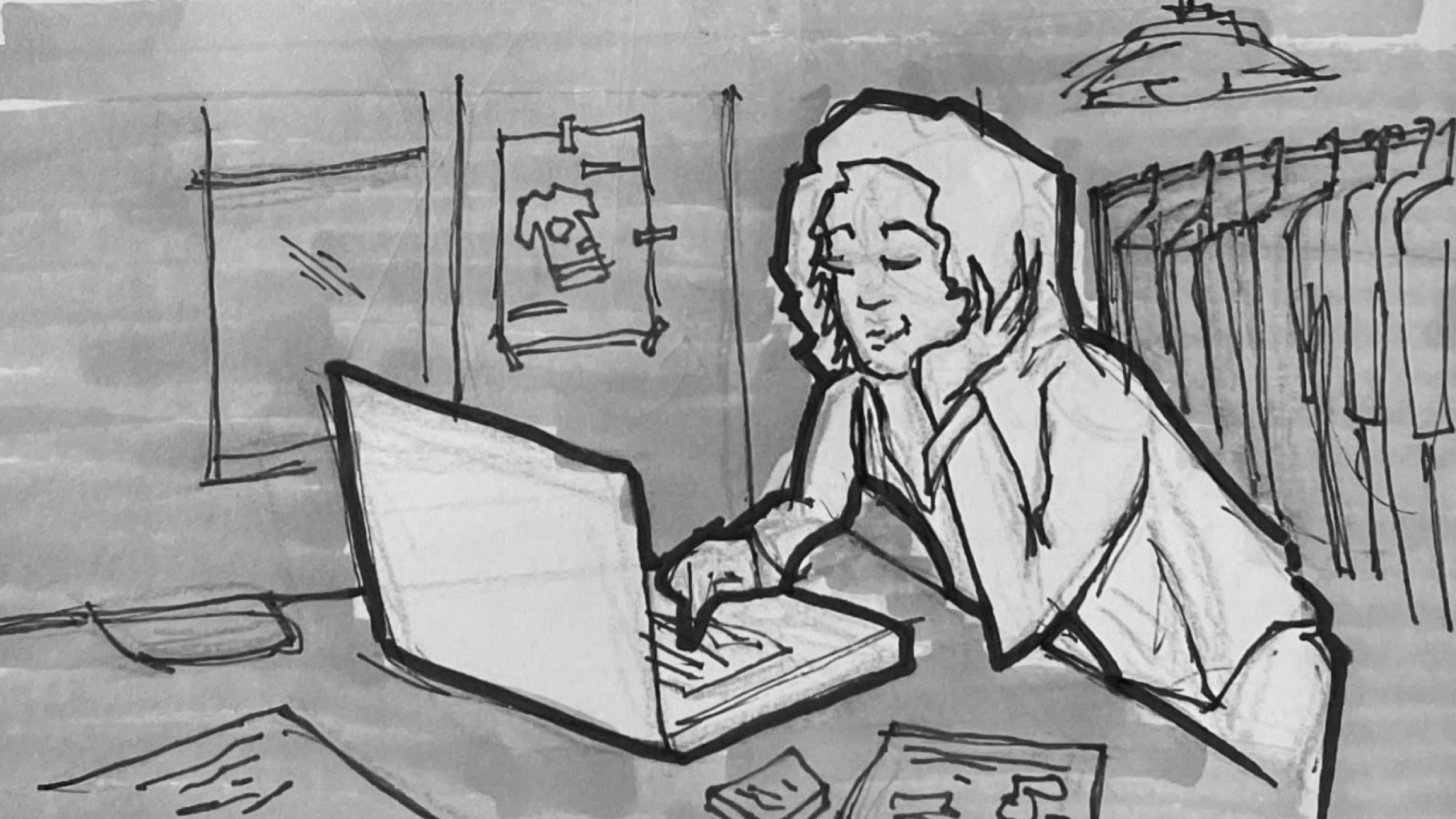
With the wARroom concept, Danielle can have a versatile remote workspace that allows her to collaborate with teammates in design, strategy, and marketing. Our concept proposes a central ‘lobby’ room where users would initially land in a project. The room is surrounded by previews of modular secondary rooms dedicated to different disciplines and sub-tasks, such as design, project management, and marketing.
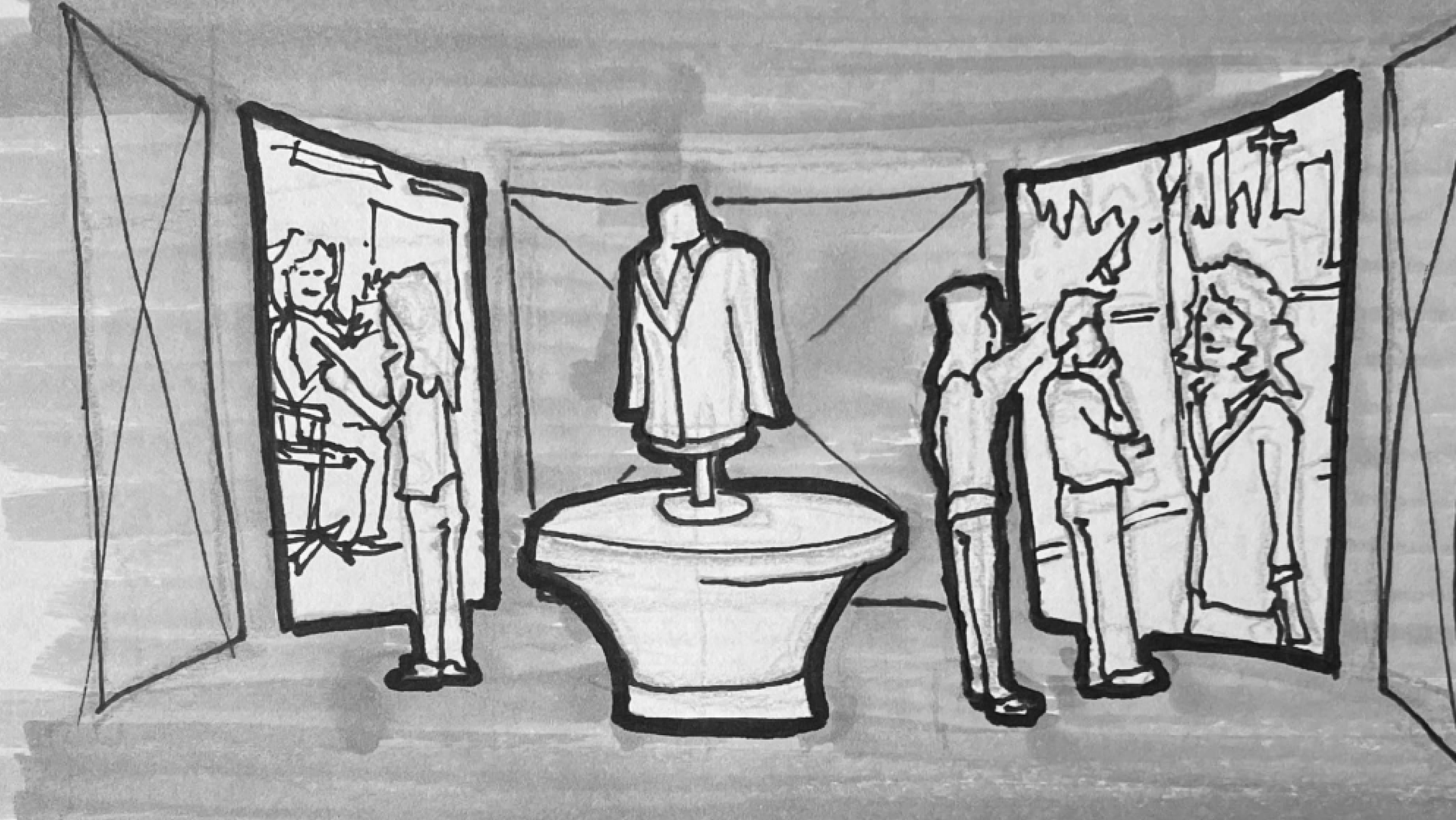
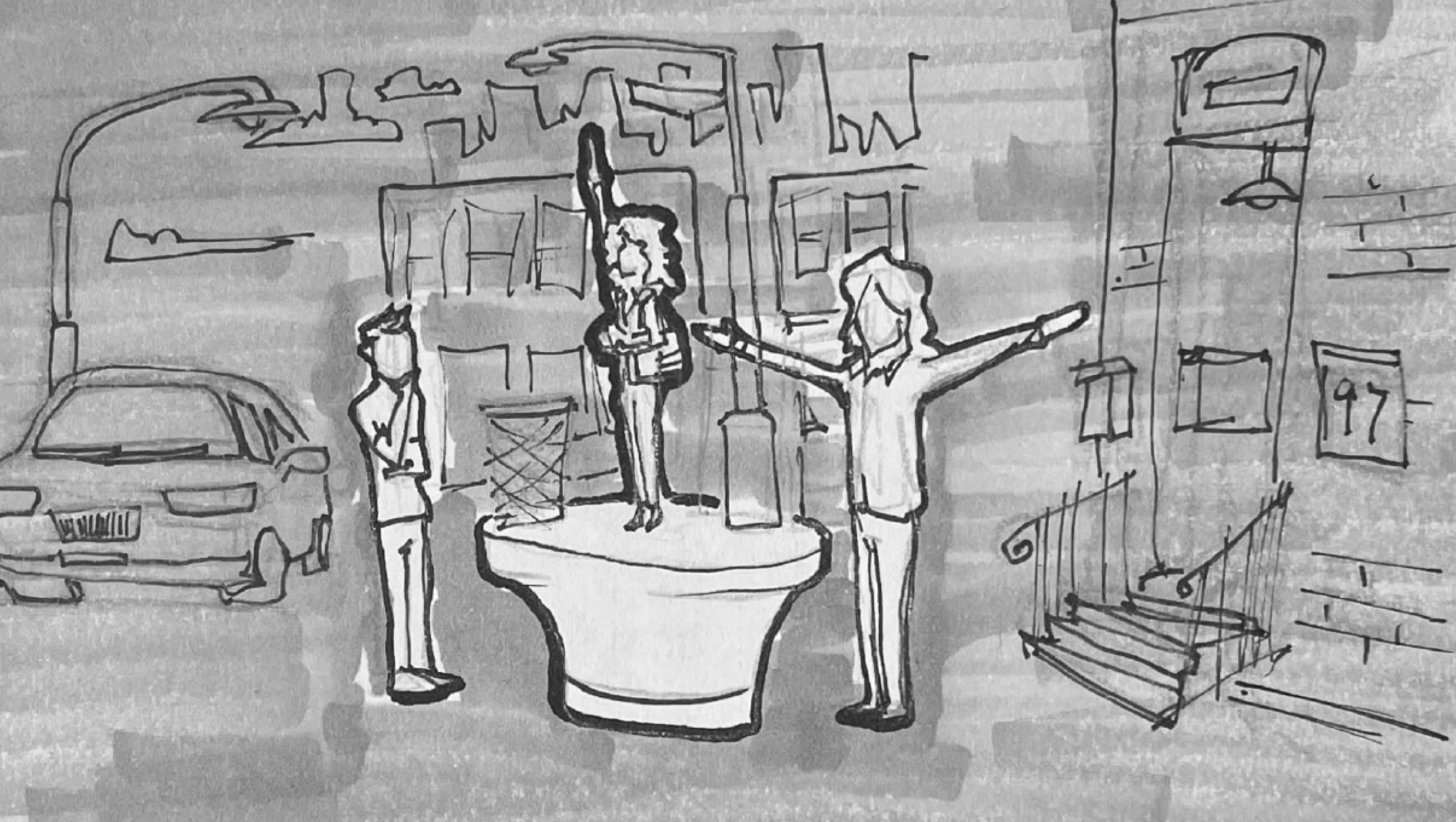

Our team used Spatial to create various room environments to enact scenarios where different disciplines in the fashion industry would use our software. We created three videos as part of our executive pitch for demo day to show how MR environments would enhance remote work for marketing, design, and project management.
Reflection
Tried and true design techniques for emerging media
This project was an exciting introduction into Mixed Reality for me, and it was a real pleasure getting to collaborate with Microsoft. Since this project occurred in early 2021, we had an ironic challenge where our team was struggling with and trying to solve remote collaboration. While this validated our problem space, research and design moved a little slower than we had expected.
Additionally, our team had logistic trouble getting VR devices, and as a result we lost valuable time at the end of the project that was initially reserved for user testing and feedback. This was when I proposed another round of storyboards for our mid-fidelity prototype while other members of the team worked to get headsets. I still believe this was a productive way of getting team alignment, but if I could redo the process I would have pushed to use our budget to get VR devices earlier so we could have done this stage in a 3D medium.
Overall, I’m very pleased with the work our team did. The project gave me experience collaborating with business and technical experts, and allowed for a lot of fluctuation between leading research & design initiatives and learning from my peers.
